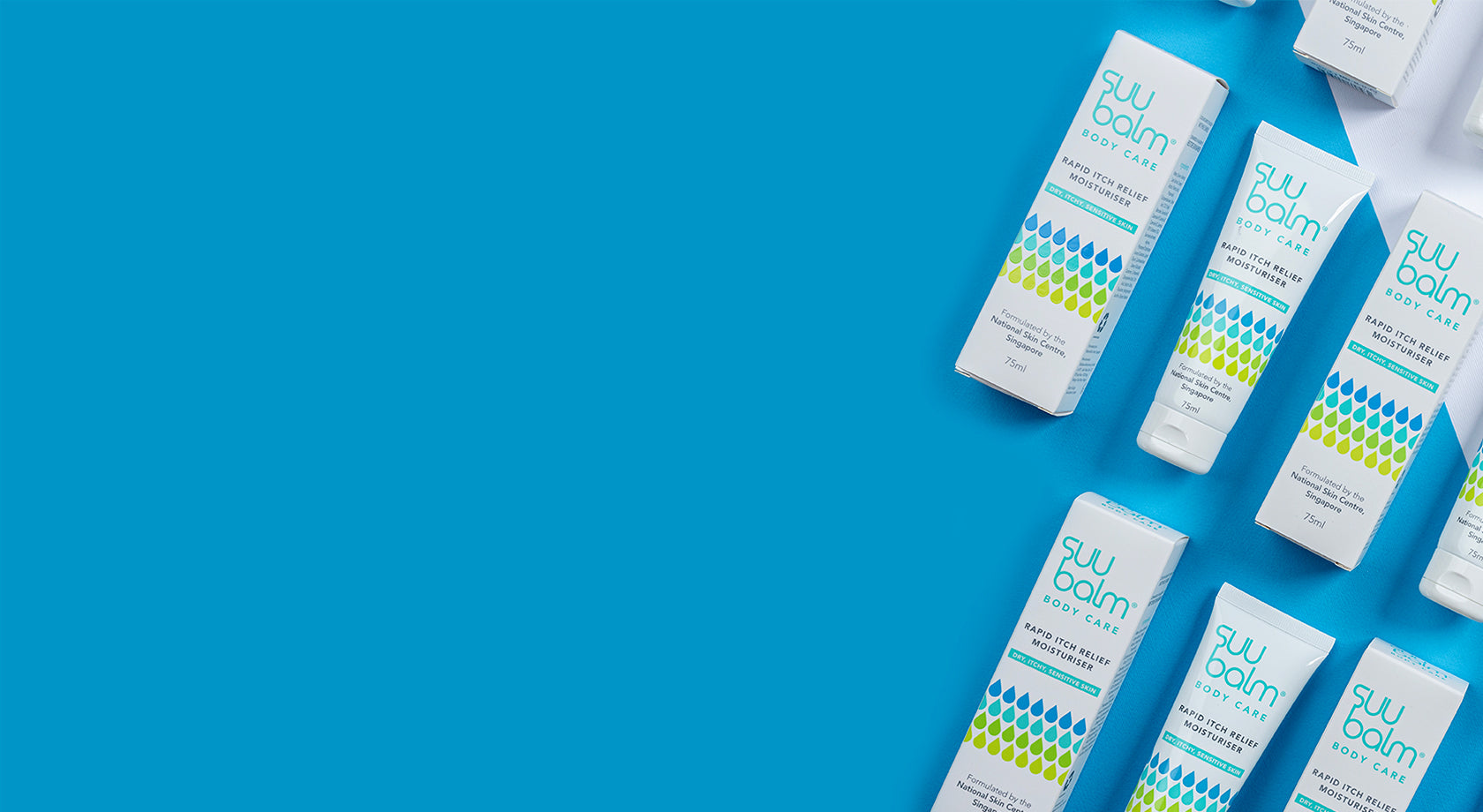Eczema & Sports: Can my child live an active lifestyle with eczema?
Dr John O’Shea, medical doctor and co-founder of Suu Balm, a range of products for people with eczema developed with local dermatologist Dr Tey Hong Liang, at the National Skin Centre, Singapore.
I frequently get asked by people with eczema, and parents of kids with eczema, whether it is ok to participate in sports or not. Let’s explore the pro’s and con’s here, and I will also share some advice for those who want to keep active.
Eczema is a very common condition in Singapore, with local research telling us that up to 20% of kids suffer with eczema, and up to 5% of adults. Meanwhile we all read and watch stories about how we should exercise to get fit, because it benefits our health greatly. The challenge for people with eczema is that their skin is very sensitive to irritation, and sweat and heat are irritating to eczema skin. In Singapore’s climate it is almost impossible not to sweat when you’re exercising, even when indoors at the gym!
The pro’s of exercise in eczema are many: there is the general health benefit that comes with doing cardio several times a week. The WHO recommendations for kids are as follows:
Children and youth aged 5–17 should accumulate at least 60 minutes of moderate- to vigorous-intensity physical activity daily.
Amounts of physical activity greater than 60 minutes provide additional health benefits
Most of the daily physical activity should be aerobic. Vigorous-intensity activities should be incorporated, including those that strengthen muscle and bone*, at least 3 times per week
The benefits of exercise are not only for the heart, but also for the bones, a reduced risk for various other diseases, and protection against depression. This is particularly important for people with eczema, because studies show that people with eczema suffer more from depression than the general population – and you can easily understand why, given the tormenting itch and rashes that accompany the condition. Finally exercise, at least in some formats, can be a social activity, and an integral part of living a full and fulfilling life among a community, and developing a healthy mind as an adult.
However, there are also con’s to exercising when you have eczema. As I mentioned, sweat is irritating to eczema skin. Now I need to go into the detail of what is happening in eczema skin here. The essential issue in eczema skin is that the very outer layer, called the stratum corneum of the epidermis, doesn’t function properly. In healthy skin it forms a tightly sealed barrier, keeping moisture in, and keeping irritants on the outside. In eczema skin this barrier is not tightly sealed, in fact it is porous, and this lets irritants like sweat into the skin, where they provoke a reaction from the “over-sensitive” immune system in the skin of eczema sufferers. Furthermore, as the water in sweat evaporates the sodium left behind can cause the skin to dry out. When you exercise you generate heat, and this heat can also lead to itchy skin, and scratching will damage already sensitive skin. Finally this increased body heat causes sweating, which can dry the skin to some extent.
How to balance these pro’s and con’s out? The good news is that the pro’s far outweigh the con’s, so let’s have a look at ways to minimise the downsides of exercise when you have eczema. I’ve had a look at the available advice, and summarised it here along with my own views:
Optimise your kid’s eczema – the better the condition of the skin is, the less your child will suffer when they exercise. Now this is easier said than done, and for some with severe eczema, the skin may never reach a good state, so this isn’t a reason not to exercise; all I wish to say is that try your best to do all the right things, make sure your child moisturises very frequently, reduce stress if possible, and avoid food or environmental triggers that you are aware of.
Moisturise before and after exercise. Before exercising this helps protect the skin from sweat and clothing, but be sure to use a light cream that absorbs easily into the skin (Suu Balm original and Kids creams are well suited as they absorb very easily); thick barrier moisturisers aren’t suitable before exercise. After exercise, shower (see below) and right after showering and patting the skin dry, moisturise all over.
Wear light clothing. A lot of sports clothing is designed to wick away sweat, but these materials are usually synthetic, and may irritate your child’s skin. Old fashioned cotton may be the most gentle, but experiment with what works for you. Even though your may not like the appearance of their skin, resist the temptation to cover it up – it is much better to wear less and keep cooler! This will also help to build your child’s confidence and get used to people looking at their skin and even commenting; we all have to find a balance between ignoring these comments and trying to educate those around us; getting stressed about something you can’t control isn’t helpful, so we should help our kids focus on the benefits to them, which is something that can be controlled.
Hydrate well, before, during and after exercise. This is particularly important in Singapore, where temperatures and humidity levels are high. Make sure your child has water with them, and encourage them to drink regularly even during exercise.
Pat off the sweat regularly; give your child a small, light towel to mop off the sweat regularly, in particular where the skin is very sensitive.
Try to keep as cool as possible. For some this will mean exercising in the air-conditioned gym, for others it is clothing, and for others it might be bringing a cold-pack to cool down particular areas of the skin. Remind your child that it is perfectly ok to take breaks, if this helps to cool down a bit, drink some water, and wipe off sweat.
Shower right after exercise, but keep the shower short and lukewarm, and bring your own shower gel or body wash – the kinds that are in dispensers in gyms are likely to contain ingredients that will irritate your child’s skin. Suu Balm’s body washes are ideal here, as they are ultra gentle and specifically formulated for eczema skin. Moisturise all over after patting the skin dry. If your child is still itchy, Suu Balm creams have cooling menthol with stops the itch, and are very helpful in this scenario.
Consider different types of exercise (or activity might be a better word!) for your child, and try to find something they like doing! This could be anything, even yoga! Your child may prefer solo or team sports, or even exercising with their parents, so jogging or rugby or football or badminton or even swimming are all potential options. People often worry about the potentially irritating effects of chlorine on eczema skin – yes, it can be irritating to some, but for others it actually acts to disinfect the skin, helping to restore the skin bacteria to a more normal state, which can help the eczema. One idea is to apply a thicker barrier moisturising cream before swimming, and shower straight away after, just check that the shower water is fresh and not recycled pool water.
At the end of the day, you have to play around to find what works for your child. The idea is that your child should enjoy the activity, or at least enjoy the health benefits that come from it! If your child is just starting with an exercise regime, remember that any is better than none. Start gentle and work towards the weekly goal. One of the best pieces of advice on exercise I ever got was from a very healthy looking older taxi uncle; “I think exercise is like food; you need to eat every day, and you need to do a bit of exercise every day too!”. Finally, it is never too late to start (an argument we might hear from our teenagers!) – I remember reading a couple of years ago about a 92 year old lady in the US who was the oldest woman to run a marathon, and she only started running marathons in her 70s!






